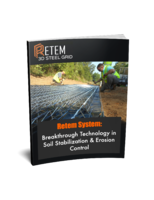ASHRAE proposes changes to residential ventilation standard.
Press Release Summary:
ASHRAE has proposed addendum 1 to Standard 62.2-2007, Ventilation and Acceptable Indoor Air Quality in Low-Rise Residential Buildings, which would require CO alarms outside each sleeping area and extend requirements to all homes. Open for public comment until Oct 26, 2009, addendum brings standard closer in line with 2009 International Residential Code. Proposed addendum S, 1 of 9 other addenda open for review, would give credits for different types of residential ventilation systems.
Original Press Release:
Carbon Monoxide Alarms Proposed for ASHRAE Residential Ventilation Standard
ATLANTA - In a change that would bring its residential ventilation and indoor air quality standard closer in line with that of the 2009 International Residential Code, ASHRAE is proposing that carbon monoxide alarms be required in homes.
Under proposed addendum l to ANSI/ASHRAE Standard 62.2-2007, Ventilation and Acceptable Indoor Air Quality in Low-Rise Residential Buildings, carbon monoxide alarms would be required to be installed outside of each sleeping area. The proposed addendum is open for public comment until Oct. 26, 2009.
Nine other addenda, unrelated to CO, also are open for review. Steve Emmerich, chair of the Standard 62.2 Committee, said that as the standard becomes more widely used as a result of its adoption into building codes and green building programs, several clarifications are being addressed through proposed changes.
Carbon monoxide (CO) poisoning leads to hundreds of deaths and thousands of injuries each year in homes. Such poisoning results primarily from automobiles left running in attached garages but also from portable generators, power tools and heaters, according to Emmerich. A small fraction of poisonings also result from failed central heating combustion appliances.
"Residents have very little ability to sense the presence of CO without detectors, unlike many other indoor polluting events," he said.
Whether to include CO alarms as a requirement in the standard has been discussed since the standard was first proposed. Debate has focused on the unreliability and cost of alarms. But Emmerich said the committee believes the time has come to make this change, noting that it will bring the standard into closer alignment with the 2009 International Residential Code, which requires alarms if the house has combustion appliances or attached garages, and with many states that have passed laws requiring CO alarms.
"This proposed requirement goes a step further, expanding the protection to all homes, regardless of fuel type or garage configuration, reflecting the fact that many CO exposures occur due to causes completely independent of these factors," he said. "It also requires that alarms be hard-wired with battery backup to address an increased likelihood of high CO exposure events during power outages."
Also open for public comment is proposed addendum s, which would give credits for different types of residential ventilation systems. The proposed change increases mechanical ventilation system flow rates for systems that are unbalanced or not fully ducted, unless they have a provision for mixing. Emmerich said this is a fairly significant change that has been under extensive study by the committee.
Standard 62.2 addenda open for public comment until Oct. 11 are addenda m, n, s and t, while those open until Oct. 26 are j, l, o, p, q and r.
To view a copy of the addenda open for public review, go to ashrae.org/publicreviews. Copies of public review drafts are only available during public review periods.
ASHRAE, founded in 1894, is an international organization of some 50,000 persons. ASHRAE fulfills its mission of advancing heating, ventilation, air conditioning and refrigeration to serve humanity and promote a sustainable world through research, standards writing, publishing and continuing education.



